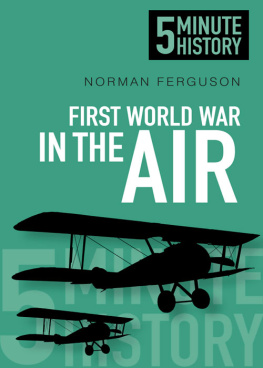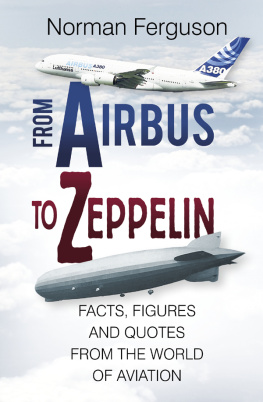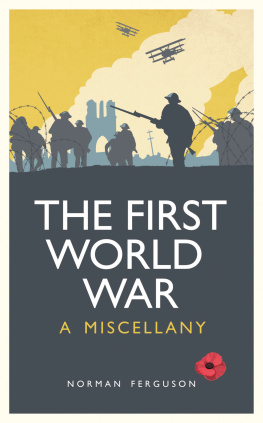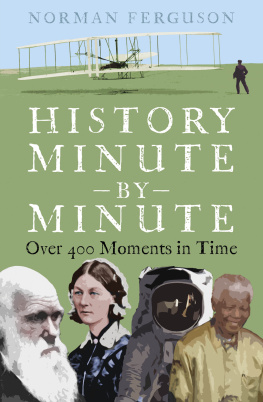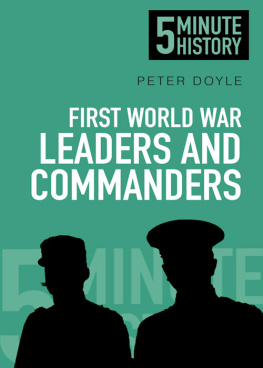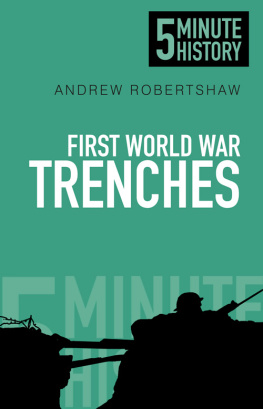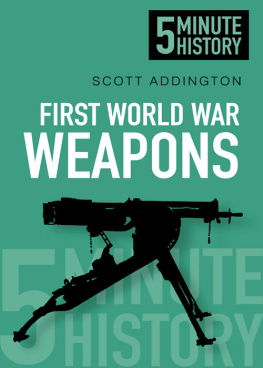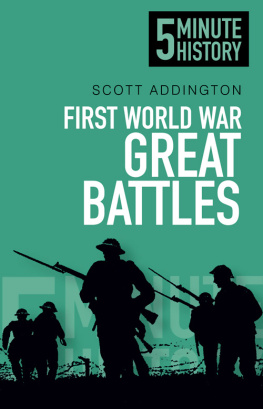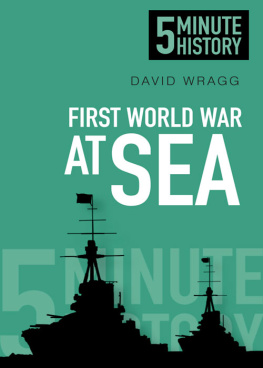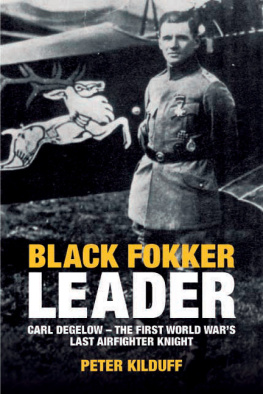
The story of aviation in the First World War is a broad subject and for space reasons this book looks mainly at the British war in the air fought above the Western Front.
CONTENTS
THE FIRST WORLD War was the first major conflict to see the use of aviation, initially in the form of balloons and aircraft providing aerial reconnaissance to army commanders on the ground. Aircraft were made of fabric wrapped around wooden frames; wires and wooden struts were used to brace the wings and more wires connected the pilots controls to the ailerons, elevators and rudder. Any bullet or piece of shrapnel cutting through them would result in a swift loss of controlled flight and almost certain death.
Early aircraft were unarmed and at the start of the war opposing pilots and observers would wave as they passed each other. This soon changed: weapons started to be carried and the gentlemanly approach, harking back to medieval days of chivalry, was soon replaced by brutal aerial battles, as shockingly violent as for those in the trenches far below. Some pilots carried pistols to carry out pre-emptive action to prevent them from burning to death parachutes were not carried, disapproved of by higher authorities for potentially impeding the aircrews movement.
As in other conflicts, the First World War instigated innovations in technology. Aircraft in 1914 were flimsy and underpowered. With no machine guns or bomb-carrying abilities, these basic flying machines were swiftly superseded. By the last year of the war huge heavy bombers, capable of carrying a ton of bombs hundreds of miles, flew as aircraft of the new Royal Air Force, the worlds first independent air service.
During the war aircraft had taken on more roles beyond flying over the battlefield on reconnaissance missions. They were now engaged in aggressive activities: bombing enemy positions, strafing trenches and shooting down aircraft, balloons and airships. At sea, aircraft flew from aircraft carriers for the first time and naval aeroplanes hunted for submarines and airships.
But these machines were no use without men to fly them. (Only a few women flew, for the military in Russia and France.) Pilots and observers were sent to squadrons with the barest of training or experience, and the resulting losses were high. These pilots were mainly unknown to the general public until the desperate need for good news from the interminable entrenched war on the Western Front allowed the press to make much of these lone aviators heading aloft in open-topped cockpits to tackle their foes in mortal combat. Those aces determined as pilots who shot down more than five enemy aircraft were seen as the personification of individual courage; the day-to-day work carried out by the thousands of other pilots was ignored.
While the endeavours of Ball, Mannock, McCudden, Von Richthofen, Guynemer, Rickenbacker and others continue to resonate down the years, they were only one part of the first ever war in the air.
BRITISH MILITARY COMMANDERS were slower than their French and German counterparts to grasp the potential of aviation. From the beginning of the twentieth century, Germany had developed their huge Zeppelin airships for army and navy use and at one point just before the war Britains military pilots numbered nineteen while France had 200.
There had been some interest shown, however. In the 1860s experiments with balloons had been carried out and the Army Balloon School had formed in 1878. Balloons were seen as potentially useful for aerial observation duties and were sent to South Africa for the Boer War. An observer raised to a decent height could see much farther than a horse-riding cavalryman; however, many of the army commanders had a cavalry background and were not overly keen on these newfangled contraptions. (They also thought aeroplanes would frighten the horses.)
DID YOU KNOW?
Geoffrey de Havilland was paid royalties for each aircraft produced from his designs. He became wealthy as a result and founded the de Havilland aircraft manufacturing company, which built the legendary Mosquito aircraft in the Second World War.

SAMUEL F. CODY
Another innovation brought to the militarys attention was that of kites, able to lift soldiers or sailors to give them a high vantage point for observation purposes. The man promoting their use was Samuel F. Cody. Cody was a larger-than-life American who had run Wild West shows before turning his attention to aeronautical matters. He was also involved in the advent of airships in Britain. Britains first military flying machine the airship Nulli Secundus first flew in 1907, with Cody having helped with the steering and engine installation.
However, it was the heavier-than-air machines, as opposed to lighter-than-air balloons and airships, that were to ensure Cody a place in aviation history. On 16 October 1908, he made Britains first sustained and powered aircraft flight, aboard British Army Aeroplane No. 1a. At Farnborough he flew for a distance of 1,400ft and, despite crashing while trying to avoid a gorse patch, he had shown his design was capable of flight. However, the army authorities were not keen and funding was withdrawn.
I WAS THERE
Colonel Codys Funeral
Military Honours for Dead Aviator
The high esteem held by the public for the late Mr S F Cody was demonstrated in a remarkable manner yesterday afternoon when the funeral took place at the Military Cemetery, Thornhill, Aldershot. The route from the deceaseds house to the cemetery gates, a distance of two miles or more, was lined many deep by thousands of spectators.
Covered with a Union Jack the coffin was conveyed to the cemetery on a 13-pounder gun carriage. The whole of the Naval and Military Wings of the Royal Flying Corps followed, warrant and non-commissioned officers acting as bearers. On the Union Jack rested one floral tribute in the form of the steering wheel of the deceaseds aeroplane but with a broken spoke. This was from the widow and bore the inscription In Loving Memory of my dear Frank.
The Scotsman

DID YOU KNOW?
There was a real Captain Scarlett. He was the Admiraltys Inspecting Captain of Aircraft, who evaluated aeroplanes to assess their suitability for use in the Royal Naval Air Service.

In August 1912 the Military Aviation Trials were held to select a flying machine for the Royal Flying Corps (RFC), which had been established in May that year. A prize of 4,000 was to go to the winning design. Samuel Codys flying cathedral machine (so named because of its size) won the competition but it was an outmoded design and was not put into production. Instead, the Royal Aircraft Factorys BE.2 was chosen.
EARLY TRAINING
Up until late 1914, military pilots had to pay for their own flying tuition (though if they passed the course they were reimbursed). The aeroplanes used for training were not designed for the role and some pilots learnt to fly on versions of the aircraft the Wright Brothers had made the first powered flights on. They were very unstable and notoriously difficult to fly. The first aviation fatality was an American army officer killed in a Wright Brothers aircraft in 1908.
I WAS THERE
Laviation pour larme, cest zro. (Aviation for the army, its worthless.)
French General Ferdinand Foch, 1910
Next page
